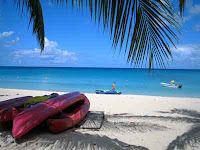New Caledonia (French:Nouvelle-Caledonie) is a dependent overseas territory of France lying in the western Pacific Ocean, in the Coral Sea, to the east of Australia and west of Vanuatu. The territory consists of the main island of Grand Terre, the archipelago of the Loyalty Islands (Iles Loyaute), and numerous small, sparsely populated islands and atolls.
New Caledonia offers beaches, mountaintop fondue in chalets, camping, amazing snorkeling and diving, and fabulous French food.
New Caledonia includes:
Grande Terre - The main island. It is one of the largest islands in the Pacific. The barrier reef lying off New Caledonia is second only to the Great Barrier Reef in size.
The main tourist destinations are:
Île des Pins - Was one of the few places in the Pacific with trees tall and sturdy enough to provide replacement masts for ships.
Loyalty Islands (Iles Loyaute)
Climate
New Caledonia has a semi-tropical climate, modified by southeast trade winds. It is often hot and humid in January and February. The islands are subject to tropical cyclones, most frequent from November to March. During winter (April to August) the daytime temperature is around 22 degrees. The water may still be warm, but it often feels too cool to really want to go swimming.
Geography
The main island of New Caledonia is one of the largest in the Pacific Ocean and its terrain consist of coastal plains with interior mountains. The highest point is Mont Panie (1,628 m).
Grand Terre is rich in minerals, and is an important source of many ores, mainly nickel and chromium. There is a mountainous interior green with subtropical foliage. The outlying islands are coral-based, and have stunning white sand, and sport palm trees.
Get in By plane
New Caledonia Airport (IATA: NOU) (ICAO: NWWW), in Païta, 52km northwest of the capital city of Noumea, (687) 35 11 18, [www.cci-nc.com/tontouta] Air France provides direct flights from Paris. Regular flights are available from Tokyo on Aircalin, as New Caledonia is very popular with the Japanese. Air New Zealand and Qantas also serve the airport. There are also flights from various Pacific nations, New Zealand, Australia, and Southeast Asia. However, there aren't many flights overall, so beware of availability. There is little or no competition on routes, so be very wary of high flight prices.
Noumea-Magenta Airport (IATA: GEA) , 4 km from the city center, (687) 25 14 00. Serves all domestic flights within New Caledonia, such as the Loyalty Islands (Maré, Tiga, Lifou, Ouvéa), from Isle of Pines in the south to Belep Islands in the northern tip of the mainland as well as Koné and Koumac on the west coast and Touho on the east coast.
By boat
Noumea is a popular port of call for people sailing around the Pacific, though most dare not sail during cyclone season.
Snorkeling, diving, windsurfing
Îlot Canard just outside the Anse Vata is a good place for beginners
Aguille de Prony is an amazing underwater structure in the Prony bay south of Noumea
relaxing, tanning, and generally doing nothing.
Baie des Citrons and the Anse Vata are common beaches at the Noumea peninsula
Îlot Maitre has a resort. This can be reached by taxi boat from the Anse Vata, and by boat from the Baie de Mouselle
Numerous other tourist resorts can be found throughout the Grande Terre and Île des Pins
eating French and local cuisine
hiking, camping
Parc Rivière Bleu in the Yaté region south of Noumea
Joining a hiking group is generally a good idea, since you then can really enjoy the great scenery without fear of getting lost, or having to stick with conventional tourist spots.... cat
Yacht charter New Caledonia [1] Windward Islands, one of the worlds largest yacht charter companies, can take care of all charter requirements, from bareboat to luxury yacht in New Caledonia and Vanuatu. Operating from different offices worldwide (UK, USA, Honk Kong, Dubai, Germany, Italy, France, Spain and Switzerland).
New Caledonia's greatest attraction is its beaches. All over New Caledonia one will find quiet lagoons and white sand perfection. You can venture to the world's biggest lagoon and explore the second largest coral reef in the world (after the nearby Great Barrier Reef of Australia). The reef can be as close as a few kilometers from the coast in some places and as far as 65 km in others. With an average depth of 40 m. New Caledonia's reef system contains varied fauna composed of multicoloured fish and corals of incredible shapes.
From the Isle of Pines, the Loyalty Islands, and the main island Grande Terre, there are plenty of white sandy beaches, turquoise warm waters with a backdrop of unique flora to explore.

















.jpg)





